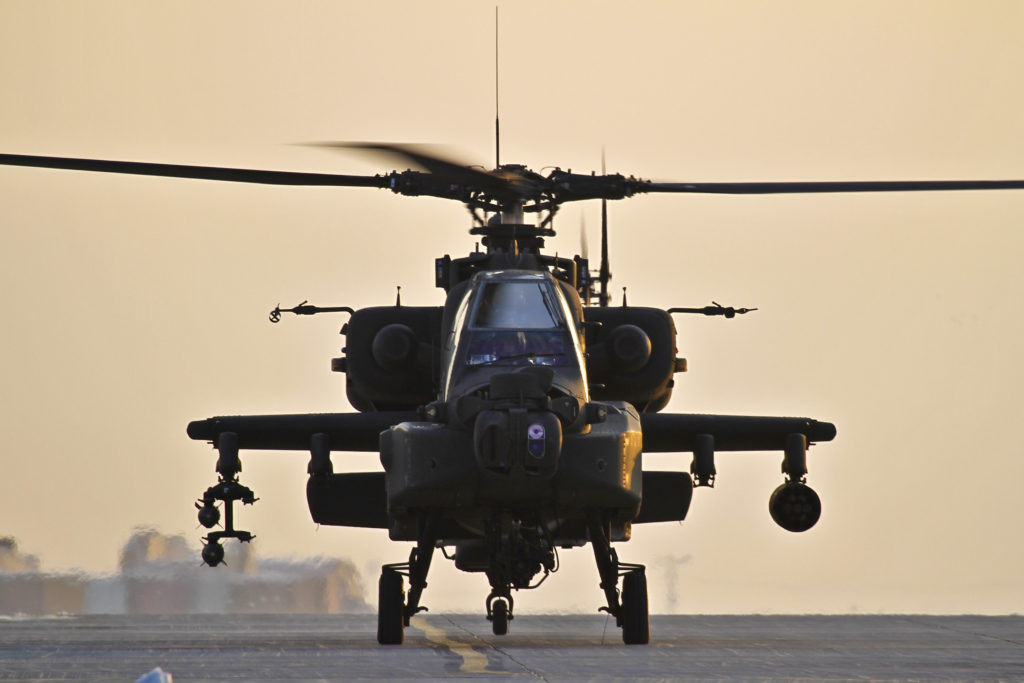

The U.S. Army is looking for small-business innovations in artificial intelligence, machine learning, system monitoring and radar targeting sensors and clean technologies that provide critical solutions for the U.S. Soldier.
The Army Applied Small Business Innovation Research Program released three Direct to Phase II contract opportunities with awards up to $1.7 million and 24 months in duration, and two Phase I contract opportunities with awards up to $250,000 and six months in duration. These new topics include:
“Staring Sensors for Pilot Situational Awareness” is the first new topic curated under the recently formed SMART Sensors Transition Broker Team. Using technology scouting to identify emerging capabilities that contribute to critical Army needs, the SMART Sensors TBT brought together Army Soldiers, researchers, technologists and acquisition officers to identify its technology priorities including motion, position, acoustic, biometric and environmental sensors, to name a few.
“We are curating our problem sets directly from our Army customers and transition partners,” said Dr. Matt Willis, director of Army prize competitions and the Army Applied SBIR program in the Office of the Assistant Secretary of the Army for Acquisition, Logistics and Technology. “We need to make sure the warfighter has the most innovative technologies in sensors, or electronic devices, used to measure some physical parameter for enhanced automation through the Internet of Things.”
A better system is needed to help the Apache helicopter fly faster and safer in degraded environments according to Anne Lautzenheiser, sensor engineer for Program Executive Office Aviation and technical point of contact for the sensors topic.
“We are looking to build off of work that has been done in conjunction with U.S. Army DEVCOM Command, Control, Computers, Communications, Cyber Intelligence, Surveillance and Reconnaissance, to develop large-format focal plane arrays and productionize these arrays into modules that can be integrated onto the aircraft,” Lautzenheiser said. “We’re looking forward to seeing what innovative solutions are developed by more nimble small businesses.”
The Army Applied SBIR program offers a valuable opportunity for small businesses to interact with Soldiers and technical and operational subject-matter experts, who provide insight into technology needs and guide small businesses through the Army research and development ecosystem. Small businesses are teamed up with technical points of contact, who serve as a resource for companies as they mature their technologies for insertion into Army programs of record.
“The Army is looking to bring the technology of solid-state circuit breakers to the rotorcraft cockpit,” said James Alex, engineer for PEO Aviation and technical point of contact for one of the topics. “These advanced circuit breakers are needed to enable enhanced power management techniques and technologies to add capabilities to our enduring and future fleets. Small businesses are the right choice to bring the Army this solution because the underlying technology already exists; it just needs tailoring to fit Army Aviation needs.”
The pre-release period for the new topics is June 15-27, 2022. During this time, companies can submit questions to the Defense SBIR/STTR Innovation Portal and via email. Qualified small businesses can submit proposals from June 28 to Aug. 2 at noon EDT. Full proposal packages must be submitted through the DSIP Portal. Additional information, including eligibility information and how to apply, can be found on the Army SBIR|STTR website.
